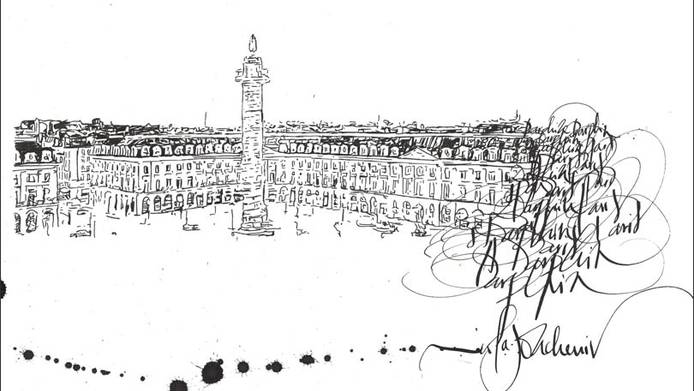History & Heritage
8.23.2021
When calligraphy gives designers their letters of honour

By definition, calligraphy is a way of drawing and forming the characters of handwriting. Its use is notably seen as one of the most characteristic components of the arts of Islam. While this script has an obvious and historic place in books and on walls, its popularity has also, and for some years now, been put to use by the greatest international designers.
From simple scarves to high fashion dresses, many local and international brands are now using oriental calligraphic and artistic features. For the designer of the conceptual shop THAT, Meera Toukan, its popularity stems from the fact that beyond being an art, calligraphy “is a heritage“. “You can easily play with it to make it more relevant to the modern consumer.”
An art for diversity and unity
These designers then believe that Arabic calligraphy can be an inspiring and unifying art form, as well as an intimate reflection of cultural beliefs and roots. For this reason, Arabic calligraphy is increasingly present in fashion, not only in the Middle East but also in the West, where brands such as Zidouri (which features Arabic embroidery on streetwear and jewellery) and Canava, a brand owned by Nisreen Krimed, are flourishing. Canava handcrafts muslins covered in calligraphy overlaid with newspaper prints and maps of Damascus and Jerusalem in Dubai.

While some designers experiment with layering fabrics, others reflect on the layered meanings of Arabic calligraphy. For example, Nawal Masri, founder of the streetwear label Exhale, recently collaborated with an Arabic calligrapher who uses the pseudonym illm.
The brand draws Arabic phrases in various typographic themes on clothing, often linked to current events. Its latest collaboration with calligrapher Diaa Allam, for example, was an ode to the UAE’s Mars mission, and featured the words “nothing is impossible” in Arabic.

A calligrapher at the service of the greatest haute couture houses
Moreover, some professional calligraphers are now developing their talents for the benefit of the biggest brands.
Nicolas Ouchenir is one of them. For him, many houses have realised that writing, being rare and exclusive, arouses desire: “The calligraphic word is a signature in the strongest sense. More than a dimension, it is an artistic direction“. For Berluti, for example, the letters are simple and masculine. Conversely, Versace prefers to use full and unstructured characters, while the haute couture house Margiela keeps a much more English spirit.
An oriental style with an international influence
While Arabic calligraphy naturally resonates with speakers of that language, all the designers say they are happy to see that their work also attracts international clients.
For Meera Toukan, the calligraphy on her clothes “leaves the consumer wanting to know more about culture, standards and heritage“.
Tailor-made calligraphy, therefore, that responds to the history and depth of each brand in an era where everything has almost become digital.
popular

